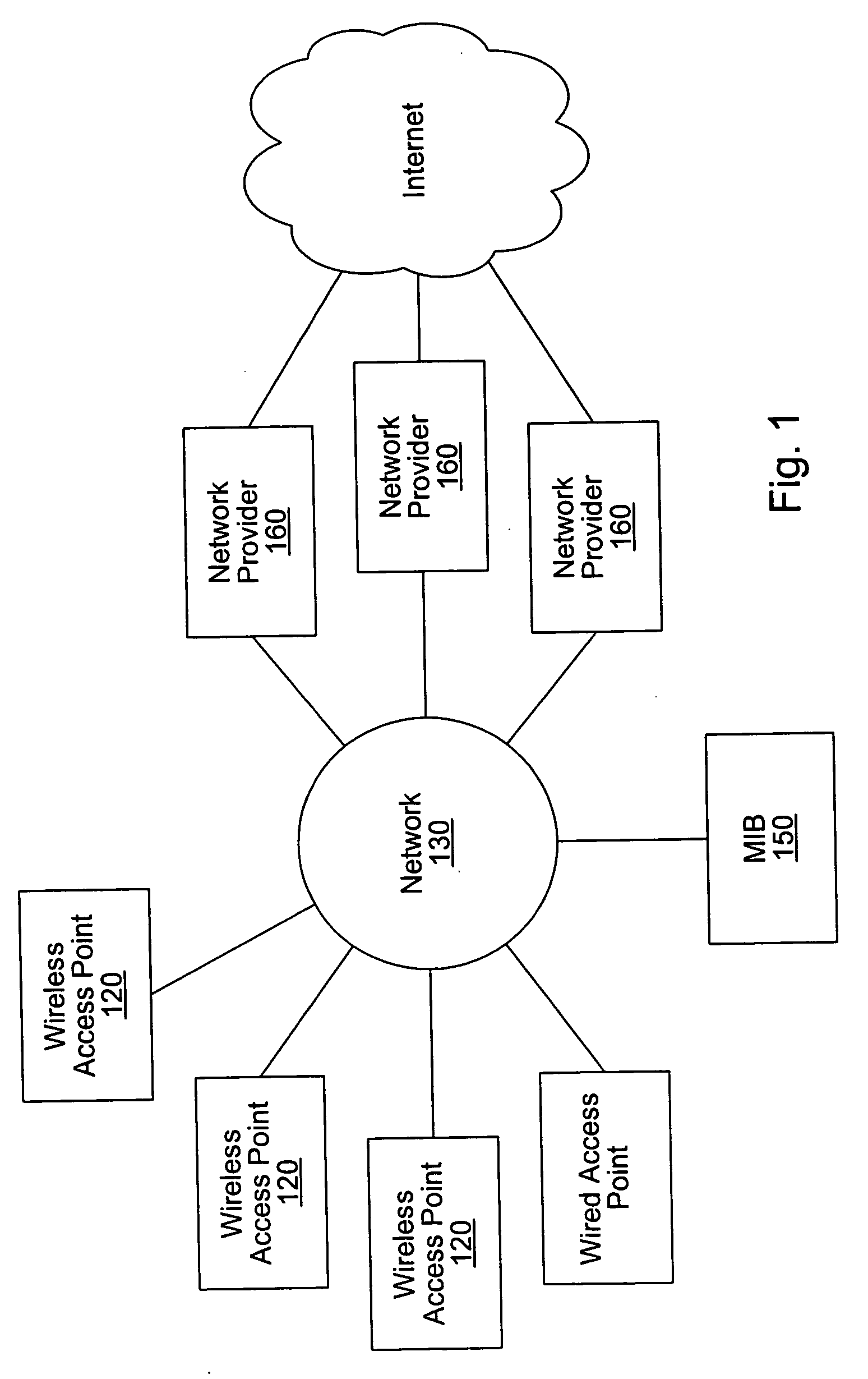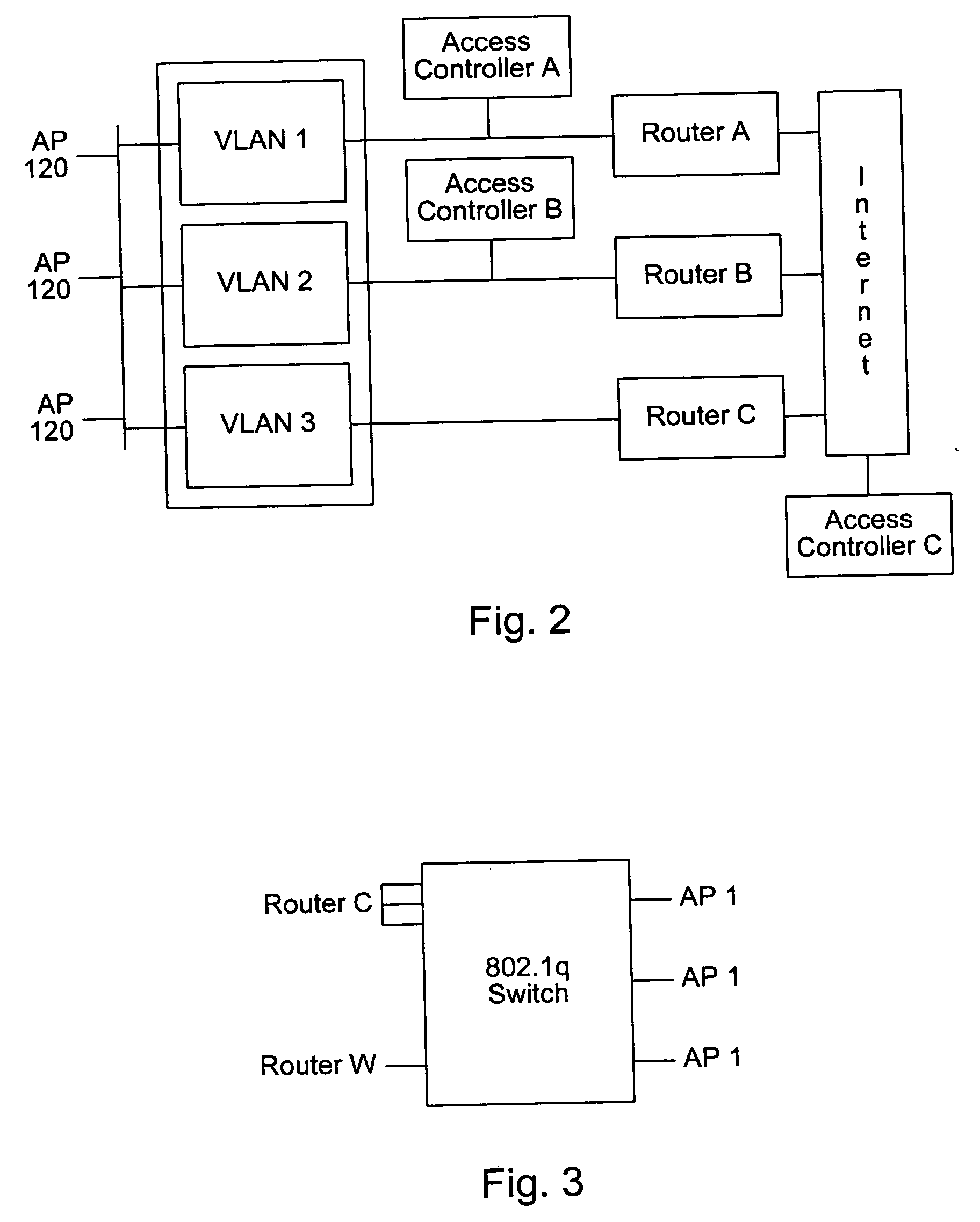System and method for concurrently utilizing multiple system identifiers
a system identification and concurrent use technology, applied in the field of wireless network communications, can solve the problems of inadequate rf bandwidth for each of these networks, the electromagnetic spectrum usable by these wireless networks is limited, and the provider begins to oversubscribe the rf domain
- Summary
- Abstract
- Description
- Claims
- Application Information
AI Technical Summary
Benefits of technology
Problems solved by technology
Method used
Image
Examples
Embodiment Construction
[0066] Incorporation by Reference
[0067] U.S. patent application Ser. No. 09 / 551,291 titled "A Distributed Network Communication System which Enables Multiple Network Providers to Use a Common Distributed Network Infrastructure" and filed on Apr. 18, 2000, whose inventors are Brett B. Stewart, James W. Thompson and Kathleen E. McClelland is hereby incorporated by reference in its entirety as though fully and completely set forth herein.
[0068] U.S. Pat. No. 5,835,061 titled "Method and Apparatus for Geographic-Based Communications Service", whose inventor is Brett B. Stewart, is hereby incorporated by reference in its entirety as though fully and completely set forth herein.
[0069] U.S. Pat. No. 5,969,678 titled "System for Hybrid Wired and Wireless Geographic-Based Communications Service", whose inventor is Brett B. Stewart, is hereby incorporated by reference in its entirety as though fully and completely set forth herein.
[0070] U.S. patent application Ser. No. 09 / 433,817 titled "Geo...
PUM
 Login to View More
Login to View More Abstract
Description
Claims
Application Information
 Login to View More
Login to View More - R&D
- Intellectual Property
- Life Sciences
- Materials
- Tech Scout
- Unparalleled Data Quality
- Higher Quality Content
- 60% Fewer Hallucinations
Browse by: Latest US Patents, China's latest patents, Technical Efficacy Thesaurus, Application Domain, Technology Topic, Popular Technical Reports.
© 2025 PatSnap. All rights reserved.Legal|Privacy policy|Modern Slavery Act Transparency Statement|Sitemap|About US| Contact US: help@patsnap.com



